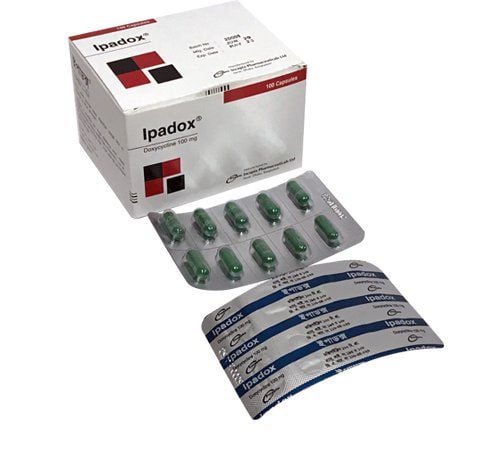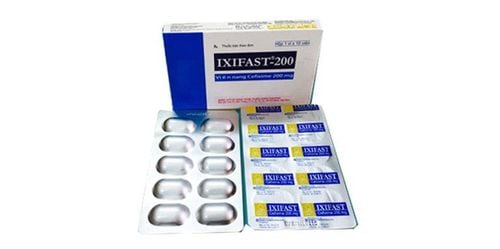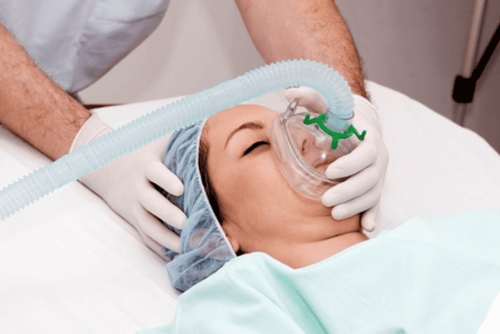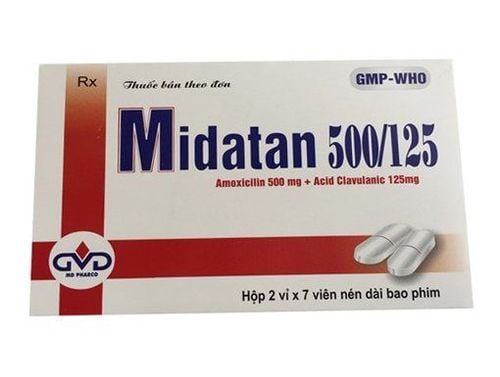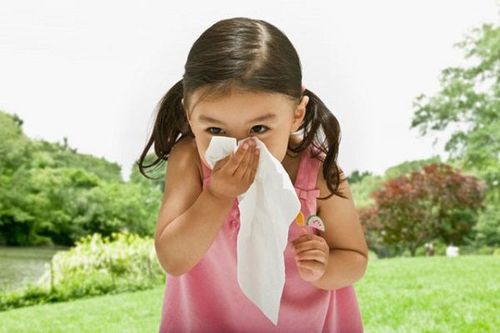This is an automatically translated article.
Bronchiectasis is a condition in which the airways of the lungs become abnormally wide, leading to a build-up of excess mucus and possibly making the lungs more susceptible to infection. Treatment in cases of bronchiectasis is mainly supportive, degreasing and anti-infective.
1. What is bronchiectasis?
Patients with bronchiectasis, the airways will be widened and blocked due to the accumulation of mucus, susceptible to bacterial infections. If the number of bacteria multiply many times, the patient will develop severe pneumonia or a flare-up of symptoms of the infection that spreads throughout the body.
If not treated in time, the bronchial system will be further damaged, dilated and lost function. At this time, the patient often has difficulty breathing, coughs continuously, produces a lot of sputum, has reduced exercise capacity, and has chronic respiratory failure.

Giãn phế quản không điều trị kịp thời sẽ làm tăng nguy cơ bị suy hô hấp mạn tính
2. Treatment of bronchiectasis
Bronchiectasis is mainly treated with drugs, water - electrolyte balance, respiratory function physiotherapy and prevention of pneumonia - bronchiolitis. At the same time, the doctor may recommend surgery if the bronchiectasis is localized to a part of the lung or the patient is experiencing complications with heavy bleeding.
Also, if the bronchiectasis is widespread and causing respiratory failure, the doctor may prescribe long-term supplemental oxygen therapy.
The goals of treatment for bronchiectasis are:
Treatment to support respiratory function Prevention and control of lung infections Remove mucus from the lungs by thinning it well Actively prevent complications of bronchiectasis 2.1 Use of antibiotics The medical treatment of bronchiectasis includes antibiotics, bronchodilators, or mucus thinners. Of these, oral antibiotics are the mainstay of treatment for repeated lung infections caused by bronchiectasis. For infections that are difficult to treat, your doctor may need to switch to intravenous antibiotics.

Kháng sinh đường uống là phương pháp chính để điều trị giãn phế quản
Besides, respiratory physiotherapy by practicing effective breathing methods or chest patting, percussion is also a way to improve airway function. These manipulations make it easier for mucus to be expelled from the lungs, making it easier for the patient to breathe.
In addition, depending on the condition of the bronchiectasis, the extent and location, the doctor may also prescribe anti-inflammatory drugs in the form of inhaled corticosteroids, long-term supplemental oxygen therapy or surgery.
2.2 Pulmonary resection in the treatment of bronchiectasis Surgery should be reserved for patients with only localized bronchiectasis, frequent relapsing pneumonia that is poorly controlled with antibiotics. Sites of bronchiectasis should be completely resected, with a radical approach for optimal symptom control.
In addition, other indications for surgical treatment of bronchiectasis may include:
Reducing acute infections Reducing excessive sputum production Coughing up a lot of blood, this time with a pneumonectomy with the procedure Bronchial artery embolization can be performed to prevent hemoptysis in the future Removal of tumor, which is one of the complications of bronchiectasis Consideration in the treatment of chronic or fungal infections

Phẫu thuật được chỉ định để điều trị bệnh nhân bị giãn phế quản khu trú
When performing bronchodilation surgery, it is necessary to focus on preventing complications of surgical intervention including: acute or recurrent empyema, hemorrhage, focal or generalized pneumothorax.
2.3 Lung transplantation for bronchiectasis In the very rare cases of severe bronchiectasis, the doctor may consider the possibility that the patient should receive a lung transplant or replace the diseased lung with a single leaf or Whole lungs are healthy.
Localized or total lung transplantation has been indicated in the treatment of severe bronchiectasis, mainly when bronchiectasis is associated with multiple sclerosis. The goal of treatment for bronchiectasis is to improve symptoms, reduce complications, and improve quality of life for the patient. In addition to supportive measures, bronchodilator surgery with partial resection of a locally affected lung and/or lung transplantation has been shown to increase management of acute episodes as well as reduce mortality. death in the long run.
For detailed advice about the disease, please come directly to Vinmec health system or book online HERE.
MORE
Diagnosis and treatment of bronchiectasis Management of bronchiectasis in adults Common causes of bronchiectasis




